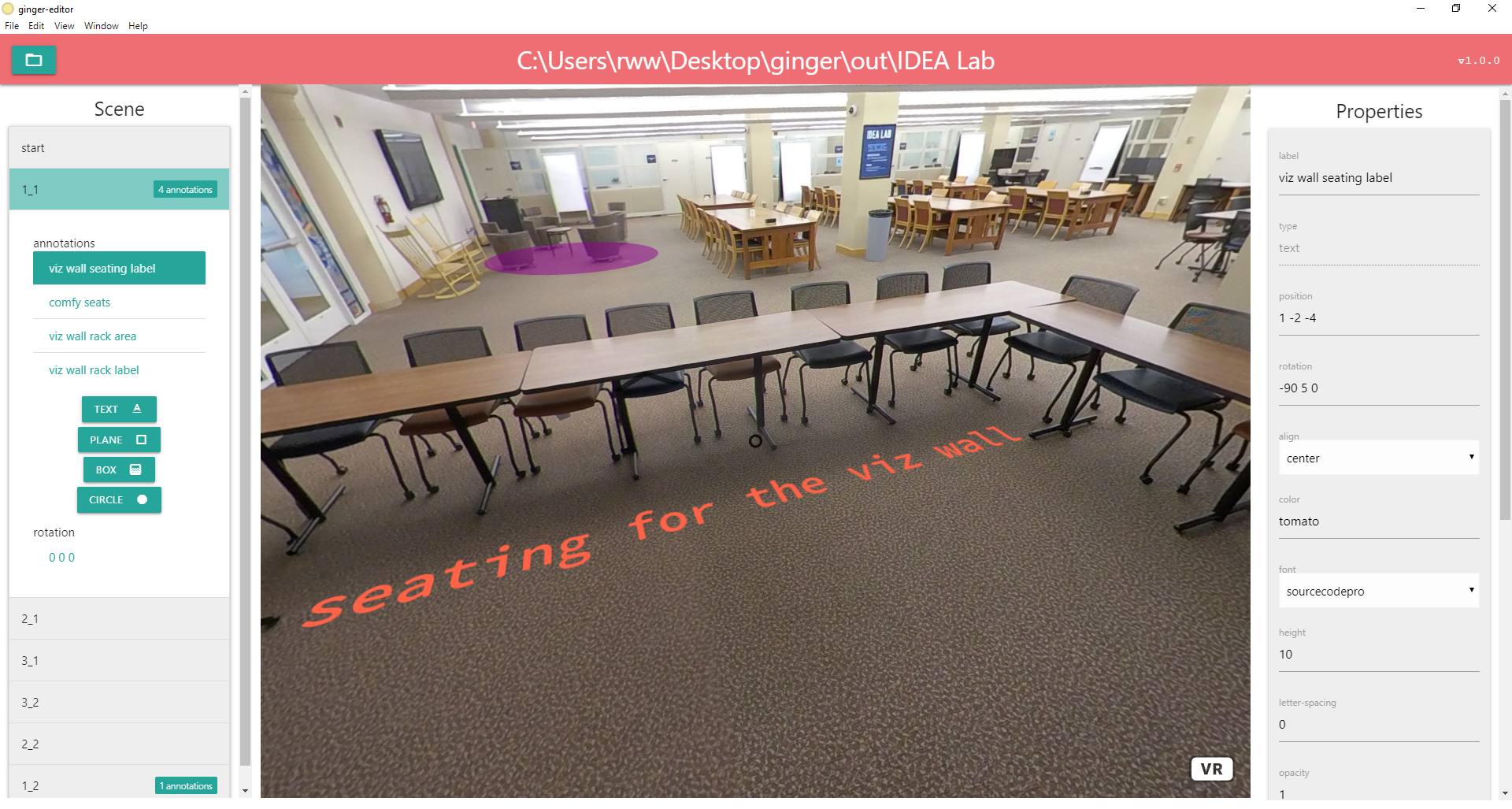gingera command line tool to generate web-embeddable 360/VR tours from a directory of 360 photos.Ginger Editora desktop application to edit, annotate, and preview the tours.
./ginger.exe -p /path/to/images/ -t "My Tour Title"
-c Number of columns in the layout matrix (see below)
-o The output location of generated files
-p Path to the directory of 360 images to be used
-r Reverse the order of images in the target directory
-s Serve the output to preview in a web browser
-t Custom title to be displayed on the loading page
Ginger parses the images in the target directory based on the 'layout' you give it. For example, to create a tour of a space from 9 images, you would capture them in this order:
-------------
| 1 | 6 | 7 |
-------------
| 2 | 5 | 8 |
-------------
| 3 | 4 | 9 |
-------------
You would then indicate that your layout matrix has 3 columns:
./ginger.exe -p nine_images/ -t "My 9 image tour" -c 3
To preview generated tour packages in a web browser, provide the -s (serve) flag. The generated tour will be available at localhost, port 5000.
We use the A-Frame WebXR library to create web-embeddable VR tours.
A desktop application that allows you to add text and geometric annotations to ginger tour packages, as well as tweak image orientations and tour starting place. Pre-built binaries for Windows, Mac OSX, and Linux will be available.
The developers wish to thank the following units and people at the University of Illinois Urbana-Champaign for their support of this project:
- Grainger Engineering Library, for ongoing support of this project in its varying forms
- Undergraduate Library, including Jim Hahn and his work with a CS498VR student developer group who provided the inspiration for the project
- Gaurav Dharra, for his work on early versions
- Welisa Lewis, for her work on an early version of the editor
- Immersive Scholars Mellon Foundation Grant, for funding early work on this project
Special thanks to:
- Disability Resources & Educational Services (DRES) and Amanda Carey
- College of Engineering Facilities and Qu Kim
for their input and guidance on core features, as well as their willingness to test and deploy beta versions of the final tours.
Thank you!
